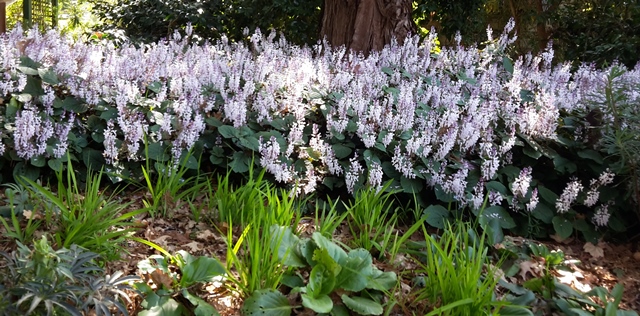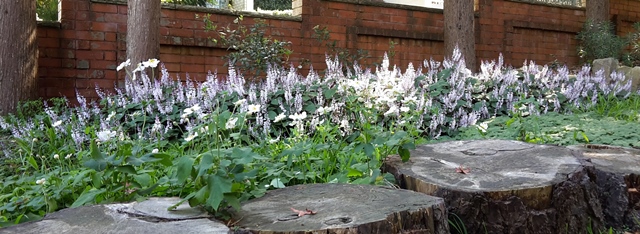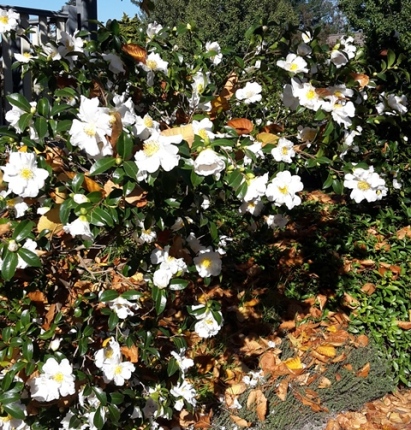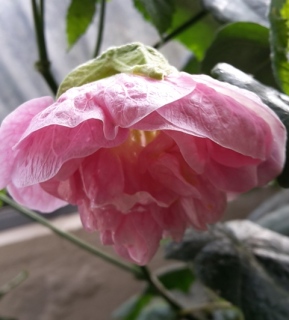
Double pink Abutilon x hybridum
The Gazebo is our indoor/outdoor function area. It is used most often for wedding receptions. There are views onto gardens from all four sides. The garden on one of these sides is built inside the space and covered with a poly-carbonate roof. The feel of this garden bed is that of a conservatory although it is not enclosed entirely from the outside and has no temperature control. To achieve the conservatory feel we need plants that can withstand the cold winter temperatures in the mountains and then the sun that beats in on summer afternoons. Abutilons fill this criteria admirably. The only drawback with abutilons is their susceptibility to aphid and white fly. The insects have easy access to the garden and protection from wind and rain once established. We use a few methods to keep these critters under control. The abutilons are cut back during winter so there is less chance of overwintering insects and their size in summer is more manageable. We spray off the aphids with water and treat the sooty mould that is the aphid companion with a detergent spray and rinse. The white fly is treated periodically and alternately with Eco-oil and Eco-Neem.
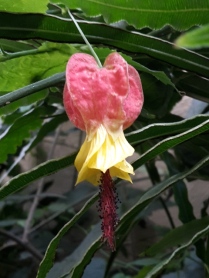
Abutilon megapotamicum
With the exception of one, all of the Abutilons in the Gazebo bed are Abutilon x hybridum. This species name is given to abutilons of uncertain origin. They are cultigens not occurring in the wild. Abutilons are related to mallows and hibicus in the mallow family Malvaceae. The species abutilon we have is Abutilon megapotamicum. It has a striking flower but is weedy in the Sydney area.



